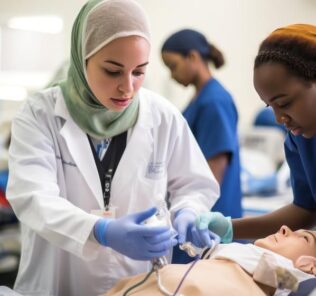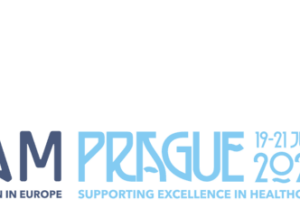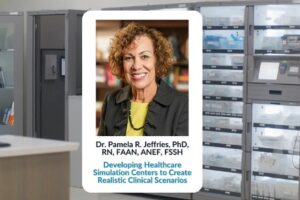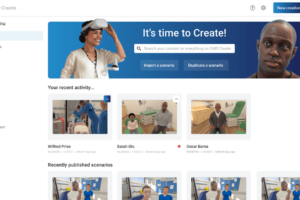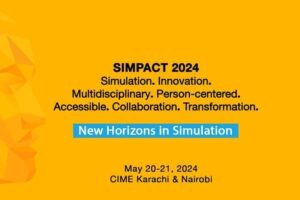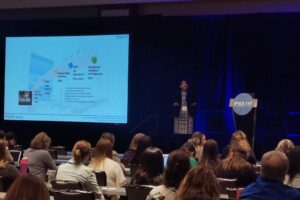Can Concept Mapping Improve Healthcare Simulation Learning?
Concept mapping in healthcare simulation can be beneficial to guide the participants on their learning journey. Some studies indicate that the use of concept maps before simulation participation improved the recognition of issues. Still, there were no significant improvements in the interpretation, response to, or reflection on the issue. Other studies state concept maps help students connect theory and practice through the demonstration of the application of didactic theory to clinical practice in nursing simulation.
This HealthySimulation.com article written by Kathy Sokol, MSN, RN, will explore the addition of concept mapping to nursing simulation and the impact on participant learning.
A successful healthcare simulation reflects meeting the stated outcomes and includes a positive learner’s response. Learners find healthcare simulation challenging. The simplest scenario can make participants panic if they do not understand what to expect. Facilitators reveal basic information in prebrief to minimize the risk of impacting performance. Learners with limited exposure to a new concept can be frustrated if the clinical simulation provides unfamiliar details.
Sponsored Content:
Reflection on Simulation Feedback by Learners
In a recent simulation scenario, ninety-one nursing fundamentals learners participated in a basic care scenario. The simulation scenario required learners to perform a brief, focused assessment and complete a simple dressing change. The learners were divided into groups of four students, and each was assigned one of the following roles: assessment, charge, documentation, or medication nurse. In addition, each group had two to three observers who sat in a small conference room to watch the live action on a video monitor.
There was a total of 15 groups (n=91) that participated in the clinical simulation with two to three observers in each group. Two groups completed the assignment and met all goals. The other simulation groups missed at least one critical objective. During the debriefing, all group participants and observers had the opportunity to self-critique and discuss personal takeaways. Learners completed an anonymous survey at the end of the debriefing. The top three comments by the learners were:
- 19% felt the sim was a good, great, or helpful
- 7% felt the sim was OK, had negative comments, or provided no comment
- Negative comments included not liking how the manikin was moulaged, feeling intimidated, and one learner who needed clarification about the roles
- 5% felt they learned a lot
The survey results are typical for the nursing program. Learners usually hurry to complete the post-sim survey because they have another class to attend or are finished for the day and want to go home. To faculty, these survey results could reflect a mediocre learning experience. Faculty choose simulated activities because they hope to reinforce classroom and clinical teaching. However, an essential skills scenario like this may not encourage deep reflection and critical thinking. More challenging healthcare simulations engage learners, but a problem occurs when the participant’s knowledge is limited.
Sponsored Content:
The participating fundamentals nursing students felt the healthcare simulation was a good experience which is a very subjective statement. Three learners commented on how much fun they had. A typical concern of first-year nursing students is that the faculty will kill a patient during the scenario. This fear is due to a lack of trust in the facilitator and a misunderstanding of healthcare simulation objectives. Some questions for facilitating faculty to consider are:
- Did the learners mean they gained insight or that their performance met their approval?
- Were they satisfied with completing at least some of the objectives?
- Was the healthcare simulation a good experience because it was enjoyable?
- Were the participants happy the facilitator did not allow the patient to die?
The definition of “a good experience” differs significantly for the faculty. Faculty define a successful clinical simulation experience as one that learners are able to transfer classroom learning into actual clinical performance. Suppose later, in a clinical rotation, the participants in this medical simulation could not perform an appropriate assessment and complete simple wound care on a live patient. In that case, the healthcare simulation would not have achieved the objectives and would be deemed unsuccessful.
Addition of Concept Map
To enhance the learning during this scenario, the fundamentals nursing faculty decided to add a post-simulation concept mapping activity. The participating groups worked independently to complete a detailed concept map that outlined the care they provided to their patient.
Learners received a copy of the patient’s chart to review. The health record included provider orders, lab results, diagnostic testing, and medication record. Each provider’s order was linked to a symptom or assessment finding to help determine appropriate nursing interventions. Learners reviewed lab results, wrote a brief explanation for each test, and recorded normal and abnormal values. Completing a detailed review of clinical testing allowed them to understand how a patient’s labs reflected their diagnosis. Resources provided were a nurse’s drug handbook and a diagnostic testing manual.
Each group then determined the primary patient problem and wrote one nursing diagnosis in NANDA (originally called the North American Nursing Diagnosis Association) format. NANDA stipulates the problem, related to something, as evidenced by what the nurse observes. For instance, a correct NANDA nursing diagnosis to address dehydration would be Altered fluid balance related to excessive vomiting, as evidenced by poor skin turgor and oliguria. The diagnosis provides clues to appropriate long and short-term patient goals.
The learners used the objectives for their concept map to choose the top three nursing actions to address their patient’s problem. An evidence-based resource cited each nursing intervention so the learners knew why they would perform that action. The addition of a concept map to the clinical simulation resulted in positive outcomes:
- Learners collaborated with other participants rather than keeping to their assigned roles as they did in the sim bay.
- A thorough chart review aided the learners to understand why nurses perform specific actions to address specific patient problems.
- The participants gained a better understanding of the clinical simulation objectives.
- Critical thinking and clinical judgment were intensified to help develop a plan of care for the simulated patient.
- The observers fully participated in the development of the concept map instead of merely watching others as they had during the scenario.
View the HealthySimulation.com LEARN CE/CME Platform Webinar How to Implement INACSL’s Healthcare Simulation Standards of Best Practice Into Your Program to learn more!
Results of Concept Map Implementation
At the end of the healthcare simulation experience, all the student participants gathered in a classroom for one final debrief. The faculty asked the learners how they felt upon completion of the concept map. There was overwhelming agreement that the challenging assignment solidified their understanding of the healthcare simulation scenario. Learners expressed greater confidence in their ability to care for a living patient and were grateful to have the faculty’s help to answer their questions.
There is always a time crunch when scheduling healthcare simulation exercises. The addition of the concept map immediately after the scenario’s completion may be impossible. However, utilization of the assignment as a learning activity during the next scheduled class can have positive benefits too. By taking a deeper dive into the objectives behind the nursing simulation, learners can gain confidence and develop higher-level thinking. Faculty can better understand which topics need to be revisited or reinforced in the classroom.
Learn More About Prebriefing and Concept Mapping!
Kathy Sokol lived most of her adult life in Florida before “retiring” to Las Vegas. She has been a registered nurse for over 30 years and a nurse educator since 2005. Kathy has a masters degree in nursing education and earned Master Instruction certification from Chamberlain University College of Nursing.
She set up and managed simulation labs on several campuses throughout the country. Kathy collaborated on a course called Sim 101 to educate faculty on how to enrich student learning through simulation. In 2016, Kathy and her team did a presentation at IMSH on how to efficiently open a sim lab while saving time and money.
Kathy was initiated into Sigma Theta Tau International Honor Society. She was a nominee for the Daisy Faculty Nurse Award. She has been published in RN Magazine, is a regular contributor on LinkedIn and has an adult learning page on Facebook. She is currently working on a book about change.
Kathy lives in Las Vegas with her husband. She is a visiting professor at Chamberlain University College of Nursing.
Sponsored Content:





